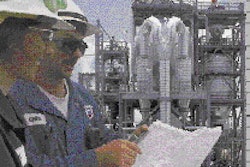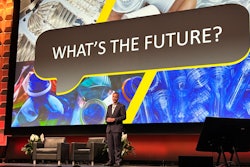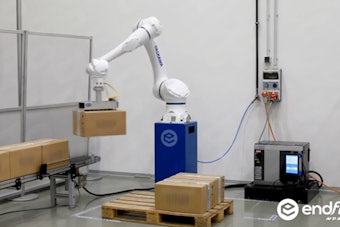On the European side of the Atlantic, the environment continues to play a major role, far outstripping its importance in North America. Kate Trollope, editor of European Packaging and Waste Law, tried to put European views on packaging and the environment into perspective for the audience at the Steel Packaging Congress. In short, she had a tough job because she was trying to describe what's become a moving target. The so-called law, the European Directive, is elusive. "At the moment, with the current packaging and packaging waste directive, we have one directive, but 15 different implementations, and thus 15 different sets of rules for a manufacturer to follow across Europe. With the proposed revision, things might get even more complicated," she told the Steel Congress. Revision of the ED is at an early stage, now encumbered by the resignation of the entire commission, and the target date of the end of 1999 appears overly optimistic. Still, Trollope's take is that the waste directive is going to get a lot more expensive to all parties. She believes that the recycling and recovery of packaging targets will become higher, perhaps 45% global recycling and 60% recovery by 2006. There simply doesn't appear to be any cheap ways to achieve the current targets for 2001, much less the higher targets for 2006. She labeled the plan in the Netherlands an effective and inexpensive one, but she said it would be hard to replicate elsewhere. In the United Kingdom last year, the cost wasn't excessive at perhaps £80 million in compliance fees. "But there is no evidence that the U.K. will achieve the targets in the current directive by the deadline, and even the Environment Minister has said so." The complex Packaging Recovery Note system is not yet proving too expensive for companies, but it's also not delivering results anything like the 15% recycling rate for plastics or a 25% global recycling rate. Some in the U.K. fear that packaging taxes could be introduced next year, unless significant progress towards the recycling targets is made. Trollope's presentation went into the kind of detail that most European companies wanted to understand (not to mention some U.S. companies). She also discussed the possibility of a Pan-European packaging tax (a single tax structure throughout Europe, instead of different ones in each country) but said that it was not likely to gain enough support. "Despite everything I have said both about the costs and the essential requirements, there is not much evidence so far that firms are using less packaging-or even packaging that costs them less in terms of Green Dot fees or PRNs [packaging recovery notes]. It is true that there are statistics from Germany that show that there is less packaging on the market than a few years ago, and [certain companies] report that they get more of the cheaper-to-license materials like glass and paper, but there is no overwhelming shift yet. It is true that you see toothpaste tubes without boxes in Germany, that more consumers will use refills for household detergents. But it remains to be seen whether following the revision, with higher costs, there are clearer changes in behavior in other member states towards using materials that are easier [and cheaper] to recycle and towards reducing the amount of packaging used in the first place.
How European culture drives packaging (sidebar)
Environment goals tougher
Aug 31, 1999
Machinery Basics
How AI is reshaping CPG manufacturing operations
Today’s CPG companies are faced with mounting challenges in their manufacturing operations. You have the data that could help you, but can you turn that data into knowledge? See how artificial intelligence can help. Learn what’s working for Pfizer, Post, and Smithfield.
Read More






















